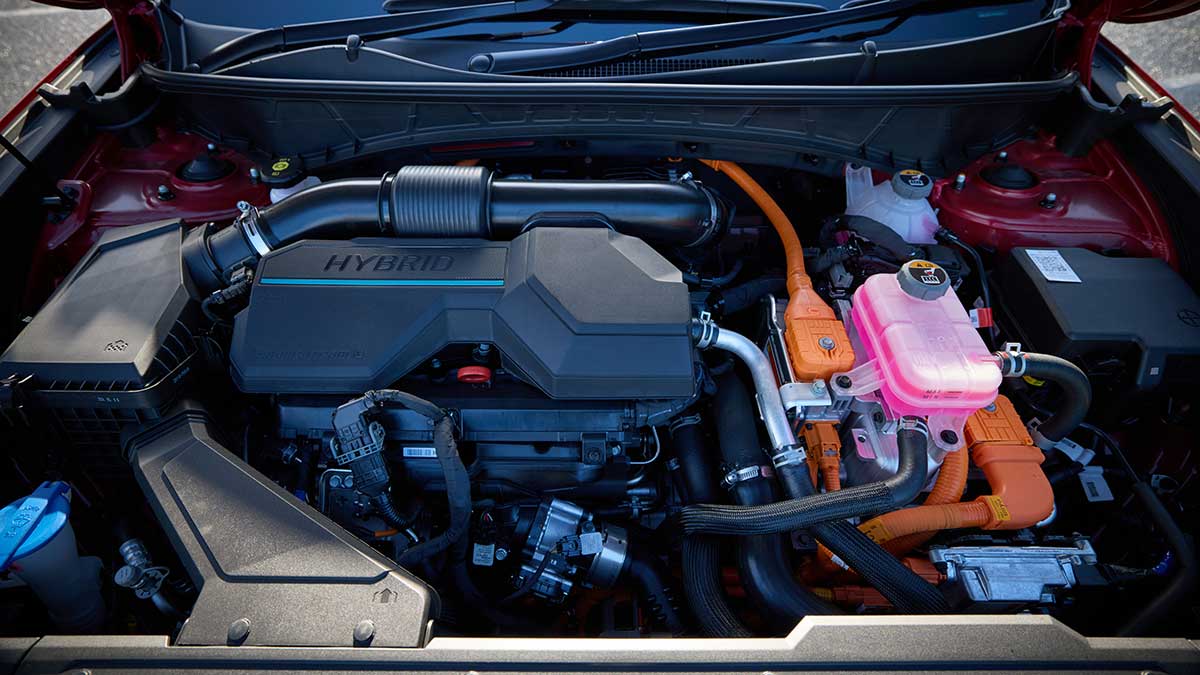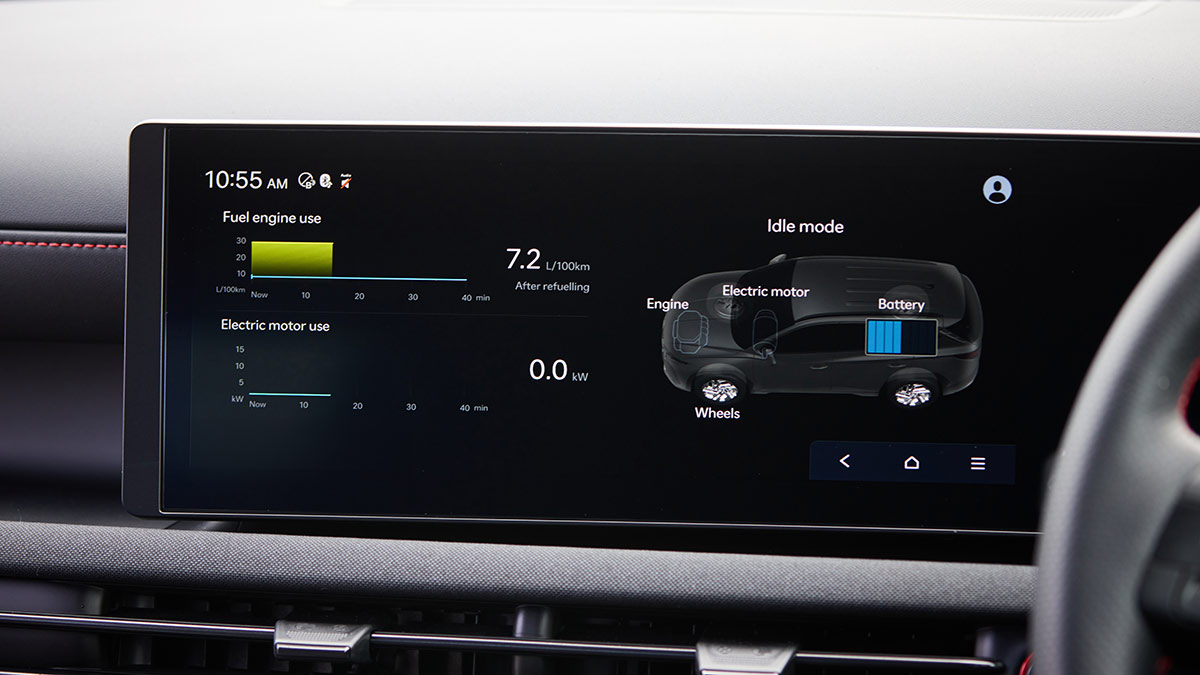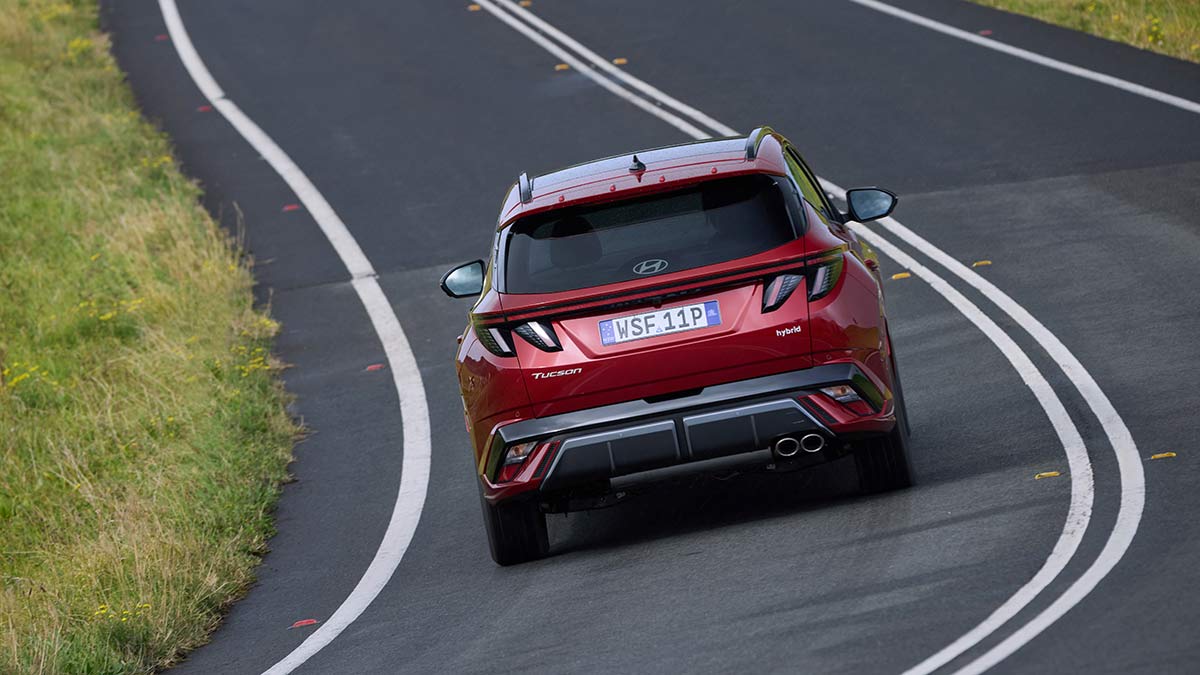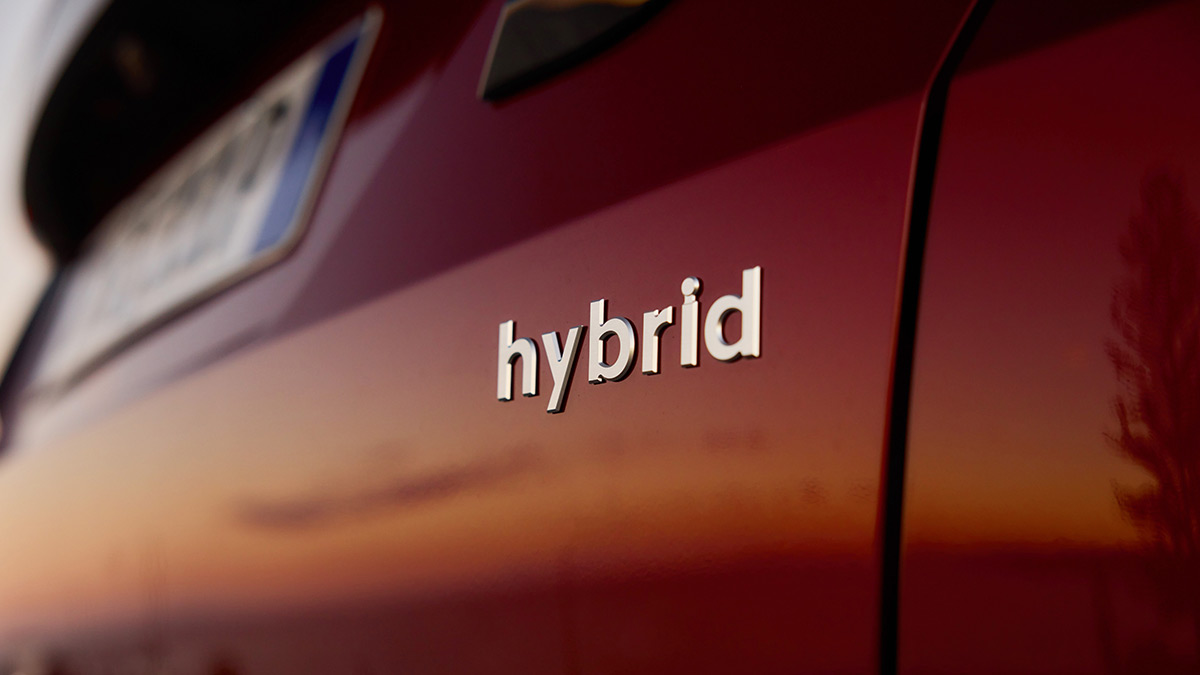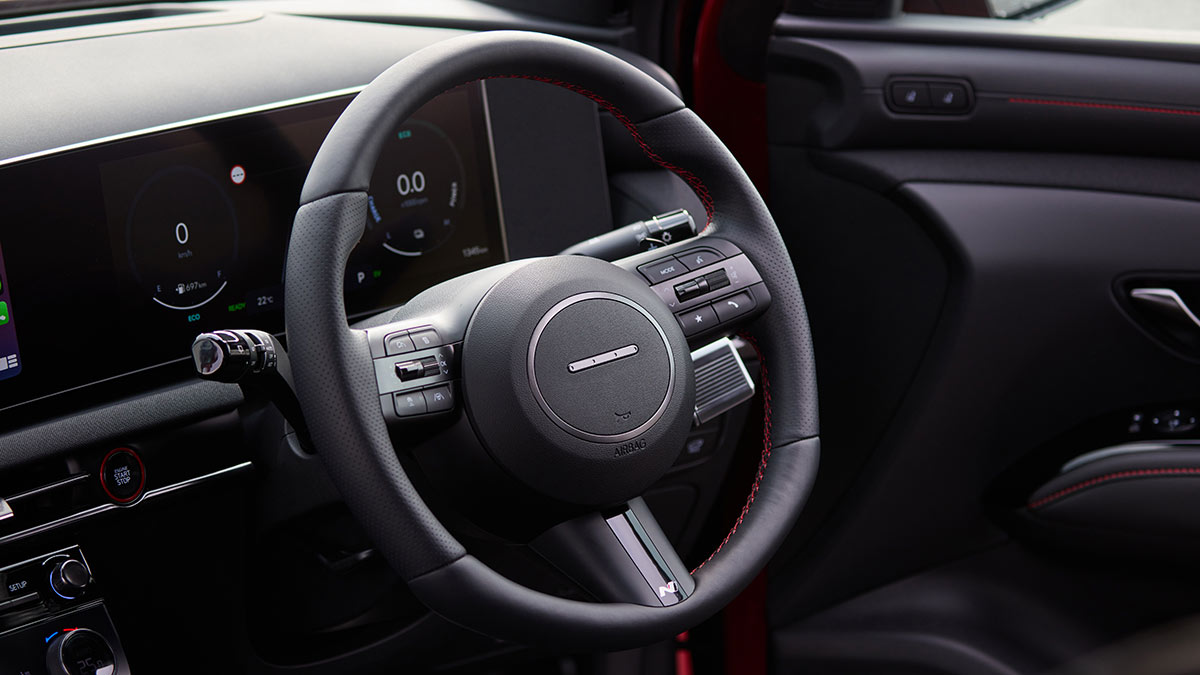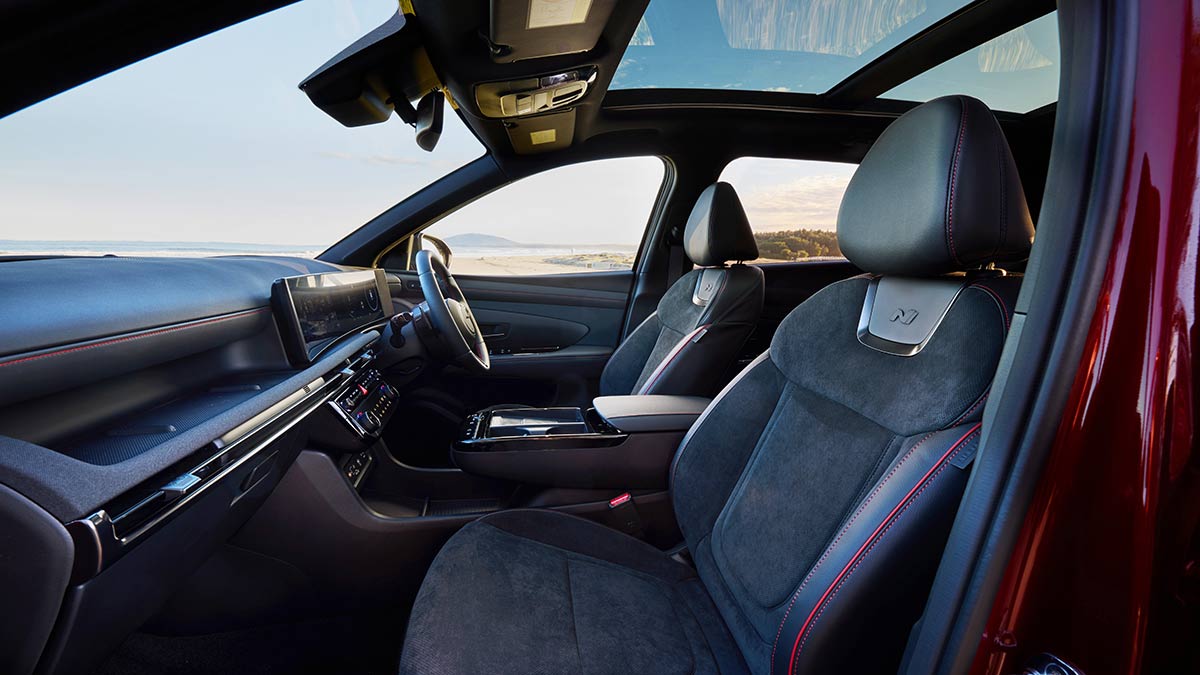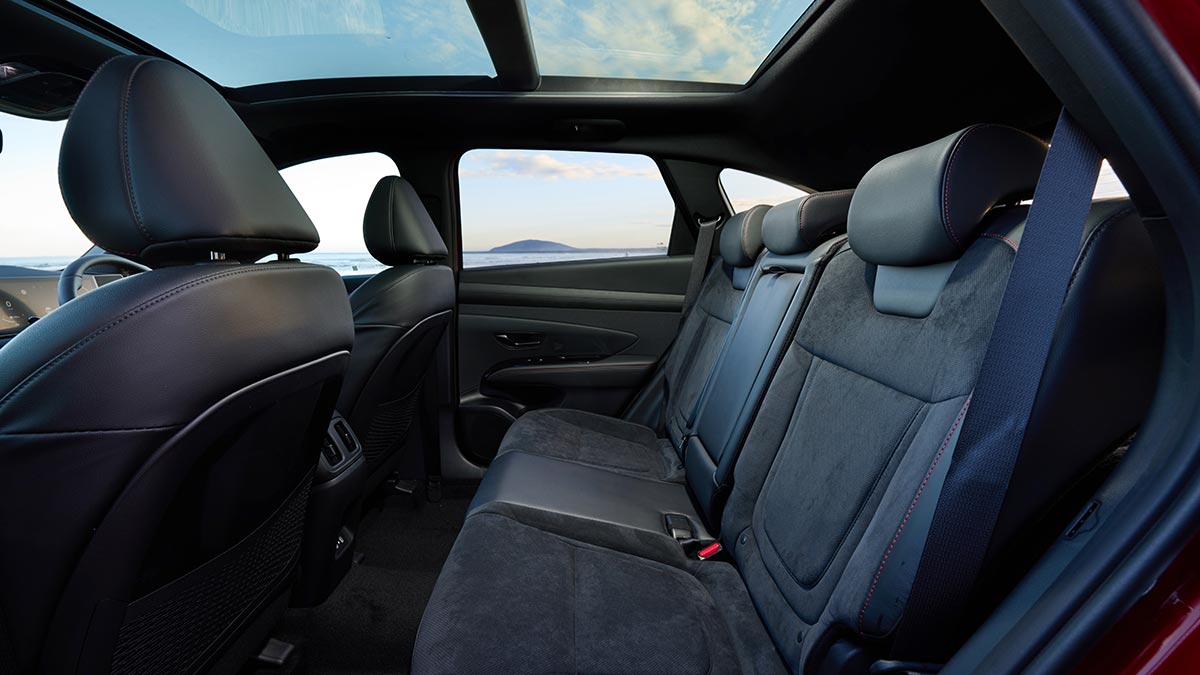The Hyundai Tucson line-up has been revised with the addition of a new hybrid powertrain and new tech across the now extensive range. With Hyundai’s popular N-Line styling option extended to more Tucson models, there's plenty to interest family buyers in the competitive medium SUV segment.
2026 Hyundai Tucson: price, specs and release date in Australia

The new 2026 Hyundai Tucson medium SUV is more affordable and adds extra technology to a pared-back range that focuses heavily on its hybrid offering.
The 2026 Hyundai Tucson is heading to Australia with an overhaul to the popular medium SUV’s line-up that puts the focus squarely on hybrid power.
This MY26 Tucson series will arrive in showrooms in the coming months and takes the fight up to the market-leading Toyota RAV4 with a slimmer, revamped model range that slashes prices and adds equipment.
The move will help offset Hyundai’s emissions under the New Vehicle Efficiency Standard (NVES) that came into force on July 1, 2025. But following a similar revamp to the Hyundai Kona small SUV, there’s clear intent here from one of Australia’s biggest brands to meet customer expectations of better value and broad hybrid powertrain options in the best-selling categories.
Let’s take a deep dive into the 2026 Hyundai Tucson range to see how it looks.
More: Search and compare new and used cars on sale today in Australia
In this article
- When does the 2026 Hyundai Tucson go on sale in Australia?
- How much does the 2026 Hyundai Tucson cost in Australia?
- What has changed with the 2026 Hyundai Tucson?
- 2026 Hyundai Tucson design and specification
- What powers the 2026 Hyundai Tucson?
- What safety and technology features on the 2026 Hyundai Tucson?
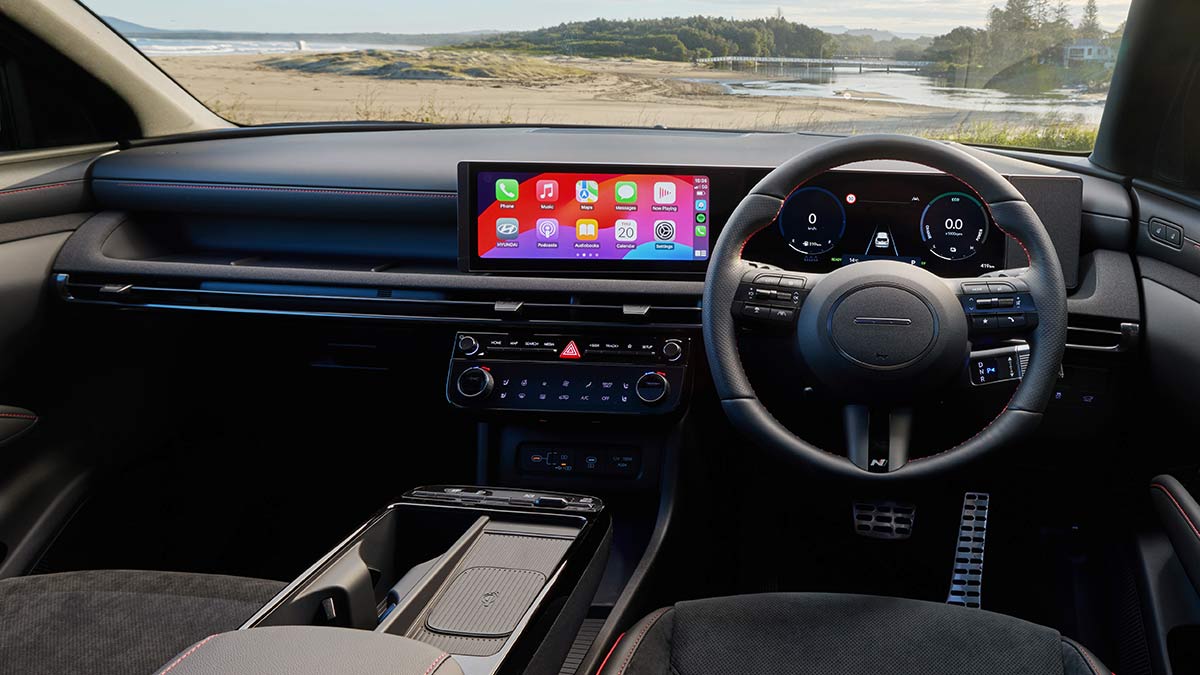
You can now unlock the Hyundai Tucson and get behind the wheel using a new digital key linked to your smartphone.
When does the 2026 Hyundai Tucson go on sale in Australia?
The 2026 Hyundai Tucson will arrive in dealerships during September 2025, so runout deals will take place in the changeover period with older stock.
There are currently 17 variants of the five-seater 2025 Hyundai Tucson available in showrooms, but this will be pared back to nine with the discontinuation of the 1.6-litre turbocharged petrol engine and all-wheel drive combination, which has accounted for just 17 per cent of total Tucson sales since the MY25 series was launched in June 2024. That compares to 51 per cent for hybrid models and 32 per cent for the price-leading petrol variants.
MY25 also saw diesel dropped from the Hyundai Tucson range, so now with the 1.6T disappearing for MY26 there’s just a couple of 2.0-litre petrol variants remaining and the rest are 1.6-litre turbo-petrol hybrids – all at a cheaper retail price.
More: 2025 Hyundai Tucson Premium Hybrid review
How much does the 2026 Hyundai Tucson cost in Australia?
The 2026 Hyundai Tucson range continues to open with an entry-level Tucson variant with the 2.0-litre petrol engine but now starts $1000 lower at $38,100 plus on-road costs. This powertrain is also available at the mid-tier Tucson Elite grade, from $43,100 plus ORCs – also $1000 below the current manufacturer’s recommended retail list price.
From there, it’s all Tucson Hybrid, offered across the base Tucson and Tucson Elite trim levels in front-wheel drive (FWD) guise – Elite also adding an N Line pack option – while all-wheel drive (AWD) versions of the Tucson Hybrid are found on Elite and the flagship Tucson Premium, both with N Line packs.
See our price box below for full details but essentially the MY26 Tucson Hybrid pricing slashes between $1000 and $2500 from the RRP. That brings the entry Tucson Hybrid FWD down to $42,600 plus ORCs, with Elite starting from $48,100 plus ORCs. Adding the N Line pack or specifying AWD adds $2500 in each case for Elite, while the AWD-only Tucson Premium starts from $58,100 plus ORCs and extra N Line treatment carries a $1500 premium.
The simplified range and new pricing structure is expected to improve the fortunes of the Hyundai Tucson in the medium SUV class – the most popular new vehicle market segment in Australia – where it’s one of the biggest players alongside the Toyota RAV4 Hybrid (from $42,260 plus ORCs), Kia Sportage (from $37,990 petrol, $46,450 hybrid), Mitsubishi Outlander (from $39,990 petrol, $57,290 plug-in hybrid), Nissan X-Trail (from $36,990 petrol, $47,765 hybrid) and Mazda CX-5 (from $36,740 petrol, no hybrid).
Interestingly, Hyundai’s move with Tucson is markedly different from Kia’s with the related MY26 Sportage, which continues to offer both 1.6-litre turbo-petrol and 2.0-litre turbo-diesel engines but has thus far avoided offering the hybrid powertrain at entry-level model grades, keeping it at a higher price point.
Kia expects its traditional petrol and diesel models to account for 75 per cent of Sportage sales, leaving hybrid at 25 per cent – far less than what Hyundai anticipates with Tucson.
More: 2026 Kia Sportage review
| 2026 Hyundai Tucson medium SUV | |
|---|---|
|
Hyundai Tucson 2.0L FWD |
$38,100 |
|
Hyundai Tucson Hybrid FWD |
$42,600 |
|
Hyundai Tucson Elite 2.0L FWD |
$43,100 |
|
Hyundai Tucson Hybrid Elite FWD |
$48,100 |
|
Hyundai Tucson Hybrid Elite AWD |
$50,600 |
|
Hyundai Tucson Hybrid Elite N Line FWD |
$50,600 |
|
Hyundai Tucson Hybrid Elite N Line AWD |
$53,100 |
|
Hyundai Tucson Hybrid Premium AWD |
$58,100 |
|
Hyundai Tucson Hybrid Premium N Line AWD |
$59,600 |
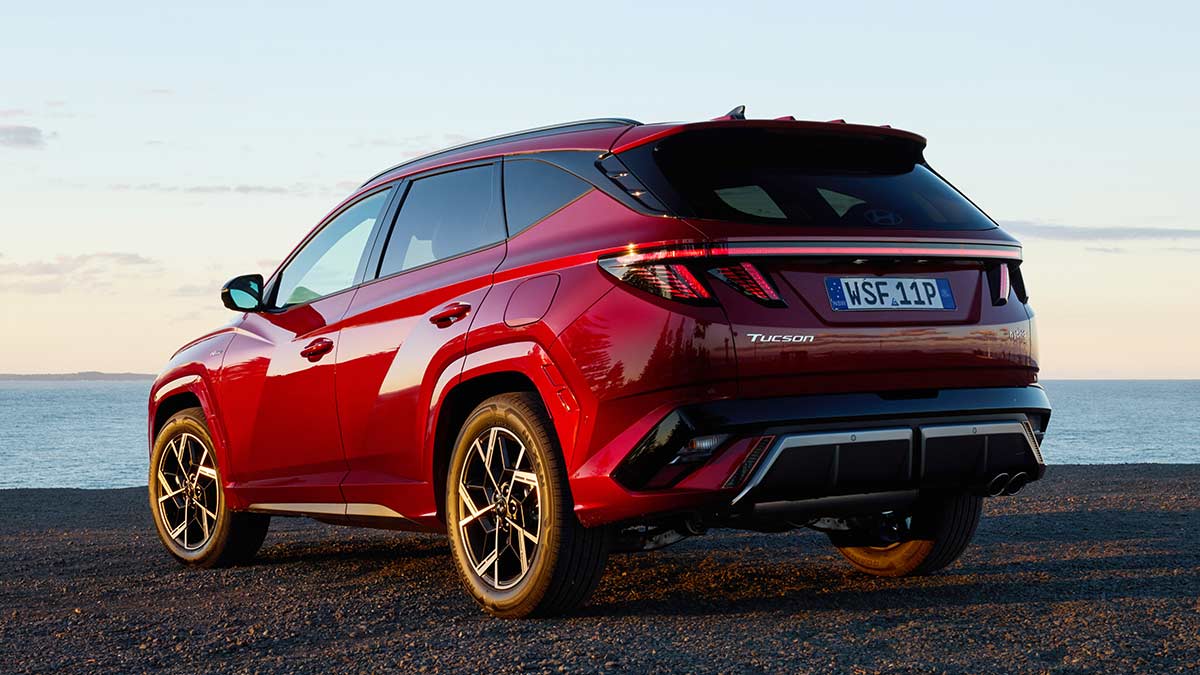
The Hyundai Tucson Hybrid Premium N Line remains the flagship of the range for MY26.
What has changed with the 2026 Hyundai Tucson?
For the 2026 model year, the Hyundai Tucson has received minor upgrades to its relatively high specification across the different grades. These come just over 12 months after a comprehensive mid-life update for the fourth-generation Tucson was introduced in Australia.
The biggest change with MY26 is the addition of the Hyundai Digital Key 2 as standard across the range, which allows owners to integrate their car keys to their smartphone’s digital wallet. Providing the Bluelink connected car services program is activated, the new digital key will enable you to control the car using your smartphone or Apple Watch, eliminating the need for a traditional key fob.
It will handle functions such as locking and unlocking the car and remote starting of the vehicle with the digital key in proximity. Hyundai says you can also share up to 15 digital keys with family and friends across the country.
Among other changes for MY26 are new exterior paint colour options – Ecotronic Grey Pearl across the range ($750) and Ecotronic Grey Matte exclusive to the N Line pack ($1000) – and redesigned alloy wheels, most notable on the base Tucson which now runs on 17-inch rims rather than 18s. Petrol models have a full-size spare wheel but the hybrids make do with a space-saver.
The new body colours join a palette that includes the no-cost White Cream and optional ($750, up from $500) Amazon Grey, Cashmere Bronze, Deep Sea, Phantom Black, Shimmering Silver and Ultimate Red (N Line only). A second matte colour, Pine Green, is also available on Premium and N Line variants ($1000).
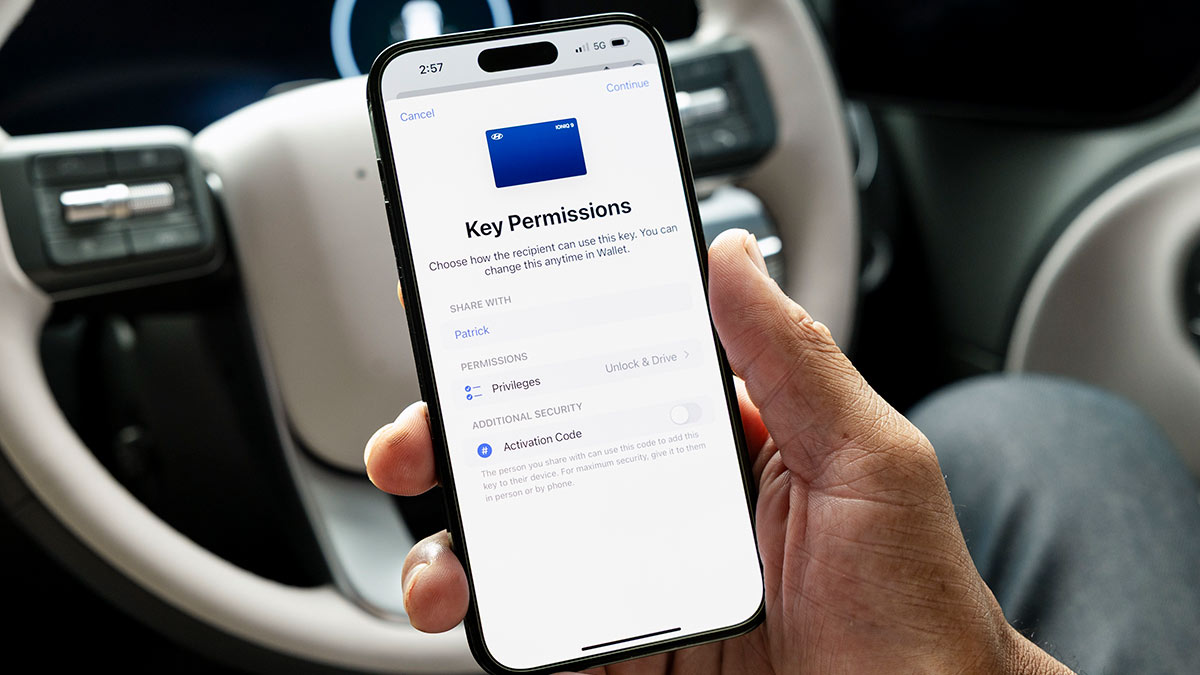
Up to 15 digital keys can be linked to the 2026 Hyundai Tucson.
2026 Hyundai Tucson design and specification
Standard features on the 2026 Hyundai Tucson are extensive but there are strong incentives for prospective owners to extend the budget to the Elite and Premium models, with or without the optional N Line pack.
All grades have LED headlights, tail-lights and daytime running lights, an auto dusk-sensing function for the front lamps, LED interior lighting, dual-zone climate control air-conditioning (with rear air vents), an alarm, push-button start, electric windows (all with auto up/down), heated power-folding electric mirrors, one-touch turn signals, a multifunction steering wheel (with tilt/telescopic adjustment), driver’s seat height/lumbar adjustment and a 60/40-split folding rear seat that extends the luggage compartment space from 539/582 litres (petrol/hybrid) to 1860/1904L respectively when lowered.
The Hyundai Tucson Elite adds 18-inch alloy wheels, leather-appointed seat upholstery, heated front seats, 10-way power-adjustable driver’s seat, an auto-dimming interior rearview mirror, rain-sensing windscreen wipers, tinted windows and a powered tailgate.
Only available as an AWD hybrid, the Hyundai Tucson Premium adds 19-inch alloys, high-grade projector beam headlights, a panoramic sunroof, ventilated front seats, driver’s seat position memory, eight-way powered front passenger’s seat, a heated steering wheel, heated outboard rear seats and ambient interior lighting. Buyers can also specify black/grey and dark green/grey upholstery for an extra $295.
The hybrid-only N Line pack contains a raft of sporting treatments, from unique 19-inch wheels to a redesigned grille, unique bumper and skid plate front and rear, and twin exhaust outlets. The theme continues inside with black headlining, obsidian black leather and suede seats, red stitching and metallic trim elements. N-Line badges and emblems are also found inside and out.
Hyundai sells the Tucson with a five-year/unlimited-kilometre factory warranty, while the high-voltage battery in the hybrid comes under a separate eight-year/160,000km warranty. Service intervals are every 12 months or 15,000km for 2.0-litre petrol models, or a distance-restricted 12 months/10,000km for the hybrid versions. Under current pricing, the total cost for the first five services is $1870 for the petrol (averaging $374 each) or $2040 for the hybrid ($408).
More: The cheapest hybrid and PHEV cars in Australia for 2025
What powers the 2026 Hyundai Tucson?
With the deletion of the non-electrified 1.6-litre turbo-petrol engine (with dual-clutch automatic and AWD), the 2026 Hyundai Tucson is now available with just two powertrain options – an entry 2.0-litre four-cylinder petrol engine and 1.6-litre turbocharged petrol-electric hybrid.
The 2.0-litre petrol engine produces 115kW of power and 192Nm of torque and drives the front wheels through a conventional six-speed torque-converter automatic transmission. It runs on regular unleaded and returns 8.1L/100km economy on the official ADR 81/02 combined cycle laboratory test.
Also running on regular unleaded, the Tucson’s hybrid powertrain uses a 1.6-litre four-cylinder turbo-petrol engine that musters 132kW/264Nm alone and works in tandem with a permanent magnet synchronous motor that develops 37kW/264Nm. Combined output is 172kW at 5600rpm and 367Nm from 1000-4100rpm.
The hybrid system stores energy in a small 1.49kWh lithium-ion polymer battery and drive is sent to the front wheels (or all four wheels in AWD models) via the ‘Smartstream’ six-speed automatic, as per the 2.0-litre petrol. Official fuel economy is listed at 5.3L/100km for both FWD and AWD models, which is a significant improvement over the petrol variant.
It’s worth noting that the Australian Automobile Association’s Real-World Testing Program assessed an MY25 Tucson Hybrid earlier this year and found the SUV used 8% more fuel (5.7L/100km) than the mandated lab test. A 2023 version of the 2.0-litre Tucson was also tested last year and was found to be more economical in the real world than the ADR figure at 7.9L/100km (-3%).
Also under the program, a 2025 Kia Sportage Hybrid achieved a comparable 5.6L/100km (albeit 14% higher than Kia claims), a 2025 Nissan X-Trail e-Power returned 6.7L/100km (+9%) and, in earlier testing, a 2022 Toyota RAV4 Hybrid averaged 4.8L/100km (+2%).
More: Does your SUV, ute or car match its fuel consumption claim?
What safety and technology features on the 2026 Hyundai Tucson?
Extensive advanced driver assistance systems (ADAS) are fitted standard to the 2026 Hyundai Tucson under the carmaker’s ‘SmartSense’ suite.
These include forward autonomous emergency braking (with cyclist and pedestrian detection and junction assist), automatic high beam, intelligent speed limit assist, adaptive cruise control (with stop-and-go), driver attention monitoring, blind spot assist, various lane support systems (lane keeping/following assist), rear cross traffic assist, tyre pressure monitoring and a safe exit warning.
The Tucson Premium has a 360-degree surround view monitor (upgrading from the standard rearview camera) and a blind spot view monitor in the instrument panel, while both the Elite and Premium have rear AEB, a more advanced (sensor-type) rear occupant alert, navigation-based smart cruise control and, with Highway Driving Assist, an extra level of control when following cars and maintaining lane position.
Passive safety equipment extends to seven airbags (dual front, front side, front centre and curtain), seatbelt pretensioners and load limiters for all five seating positions, and two ISOFIX points and three top tether anchors for rear child restraints.
ANCAP awarded the Hyundai Tucson a maximum five-star safety rating when the current fourth-generation series was launched in 2021, which remains in place until the end of 2027.
The Bluelink connected services in Tucson are free for the first five years of ownership (transferrable between owners if the car is sold during that time) and feature an automatic emergency collision notification system and an SOS emergency call (eCall) button. The car is also capable of receiving over-the-air (OTA) software updates, while other remote functions available through Bluelink extend to climate control, vehicle settings, notifications, valet mode and, on Elite and Premium models, live traffic and navigation updates.
As well as the new digital key, all Tucson models have a 12.3-inch multimedia infotainment system with wireless Apple CarPlay and Android Auto compatibility, Bluetooth connection, voice control, USB-C ports (two front and rear), a wireless phone charging pad, AM/FM/digital radio, a Quiet Mode function and electronic park brake with auto hold. The standard stereo is a six-speaker unit, upgrading on Tucson Premium to a Bose system with eight speakers and external amp.
Premium and Elite models also have native satellite navigation, SMS playback capability, a split-screen function and a 12.3-inch digital instrument panel (up from the 4.0-inch display with analogue gauges on the base Tucson). The Premium has a head-up display, too.
More: What is eCall and how crash detection technology can save lives
The information provided is general advice only. Before making any decisions please consider your own circumstances and the Product Disclosure Statement and Target Market Determinations. For copies, visit racv.com.au. As distributor, RACV Insurance Services Pty Ltd AFS Licence No. 230039 receives commission for each policy sold or renewed. Product(s) issued by Insurance Manufacturers of Australia Pty Ltd ABN 93 004 208 084 AFS Licence No. 227678.
